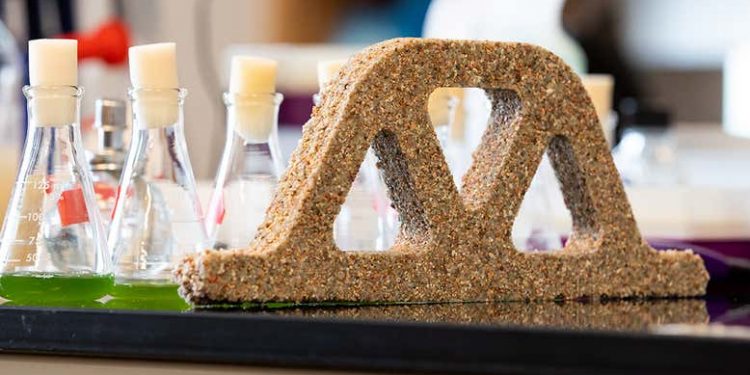Washington: Scientists have used bacteria to create a sustainable concrete that is alive, and can even reproduce, an advance that may help reduce the environmental impact of the construction industry.
Minerals in the new material are deposited by cyanobacteria, a common class of microbes that capture energy from sunlight through photosynthesis, according to the study published in the journal Matter.
“We already use biological materials in our buildings, like wood, but those materials are no longer alive,” said Wil Srubar, an assistant professor at the University of Colorado Boulder in the US.
“We’re asking: Why can’t we keep them alive and have that biology do something beneficial, too?” said Sruber.
The researchers said their ability to keep the bacteria alive with a high success rate shows that living buildings might not be too far off in the future.
Such structures could, one day, heal their own cracks, suck up dangerous toxins from the air or even glow on command, they said.
“The sky’s the limit for our creativity,” Srubar said.
The same might not be true for today’s more ‘corpse-like’ building materials, which he said can be costly and polluting to manufacture.
Making the cement and concrete alone needed for roads, bridges, skyscrapers and other structures generates nearly 6 per cent of the world’s annual emissions of greenhouse gas carbon dioxide, according to the researchers.
The team experimented with cyanobacteria belonging to the genus Synechococcus.
Under the right conditions, these green microbes absorb carbon dioxide gas to help them grow and make calcium carbonate — the main ingredient in limestone and cement.
To begin the manufacturing process, the researchers inoculate colonies of cyanobacteria into a solution of sand and gelatin.
With the right tweaks, the calcium carbonate churned out by the microbes mineralise the gelatin which binds together the sand, and the brick, they said.
“It’s a lot like making rice crispy treats where you toughen the marshmallow by adding little bits of hard particles,” Srubar said.
Additionally, such bricks would remove carbon dioxide from the air, not pump it back out, the researchers said.
The team discovered that under a range of humidity conditions, the bricks have about the same strength as the mortar used by contractors today.
The researchers also discovered that they could make their material reproduce.
“Chop one of these bricks in half, and each of half is capable of growing into a new brick,” they said.
According to the group’s calculations, roughly 9-14 per cent of the bacterial colonies in their materials were still alive after 30 days, and three different generations in brick form.
Bacteria added to concrete to develop self-healing materials, in contrast, tend to have survival rates of less than 1 per cent.
“We know that bacteria grow at an exponential rate,” Srubar said.
“That’s different than how we, say, 3D-print a block or cast a brick. If we can grow our materials biologically, then we can manufacture at an exponential scale,” he said.
However, the researchers said cyanobacteria need humid conditions to survive — something that’s not possible in more arid regions of the world.
They are working to engineer microbes that are more resistant to drying out so they remain alive and functional.
PTI






































